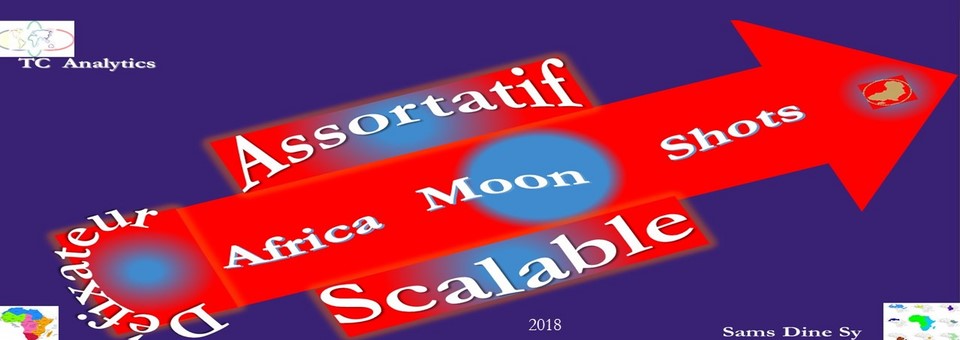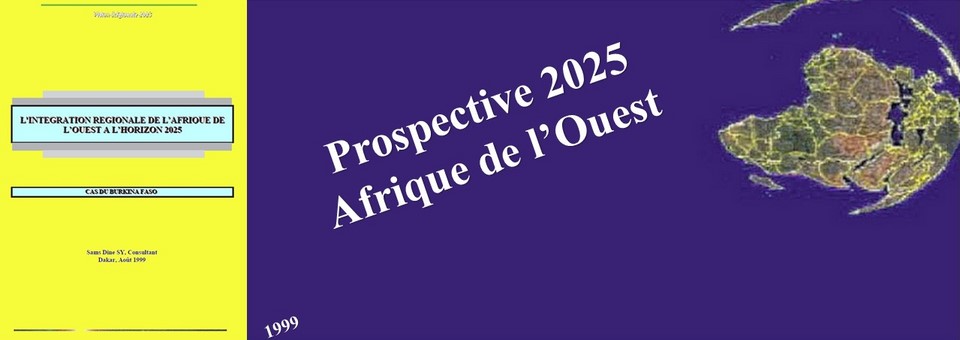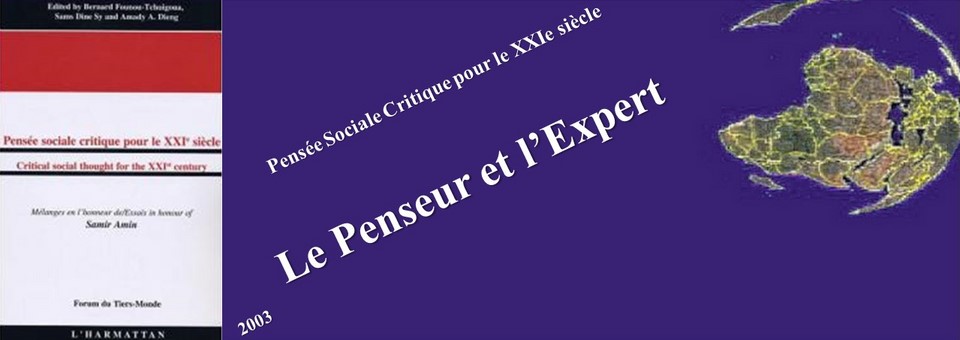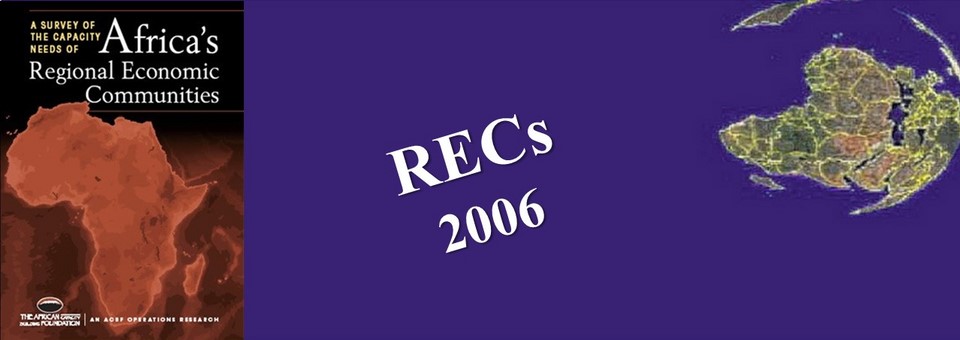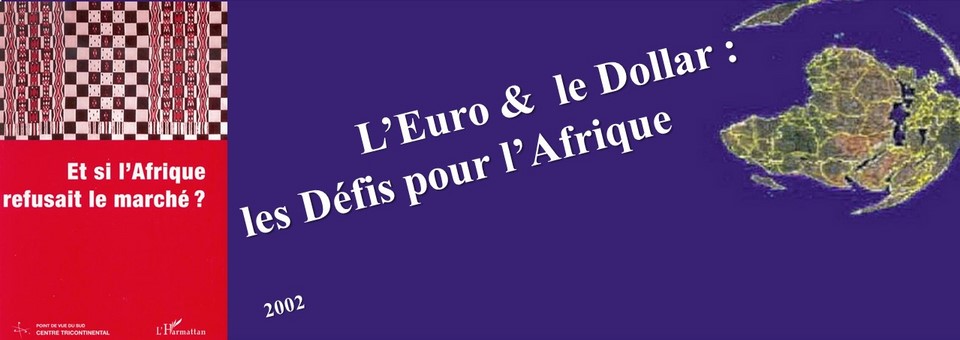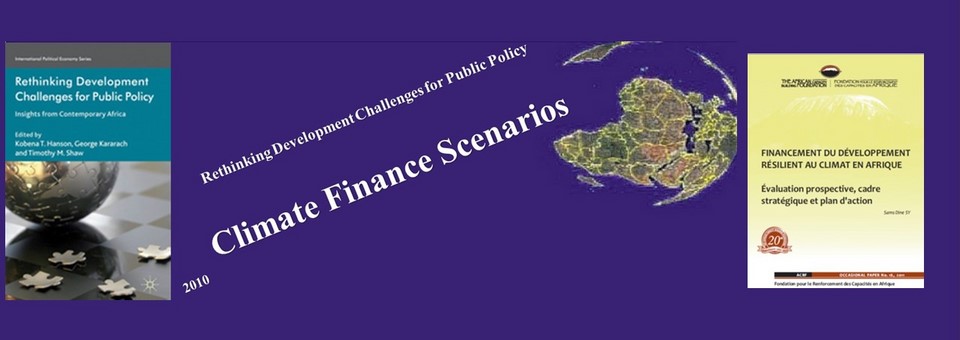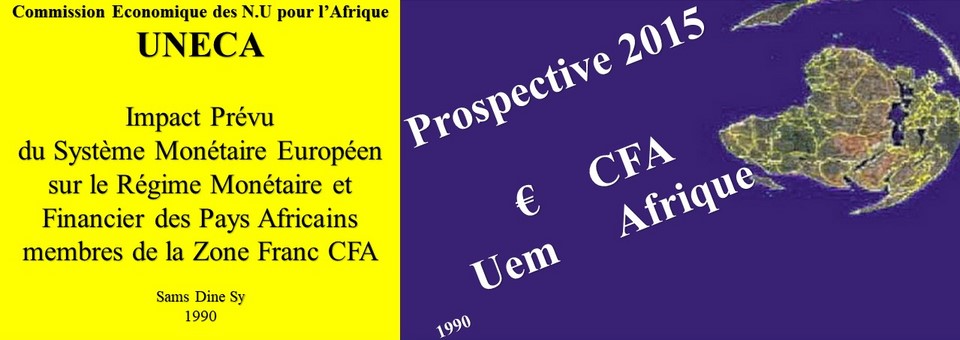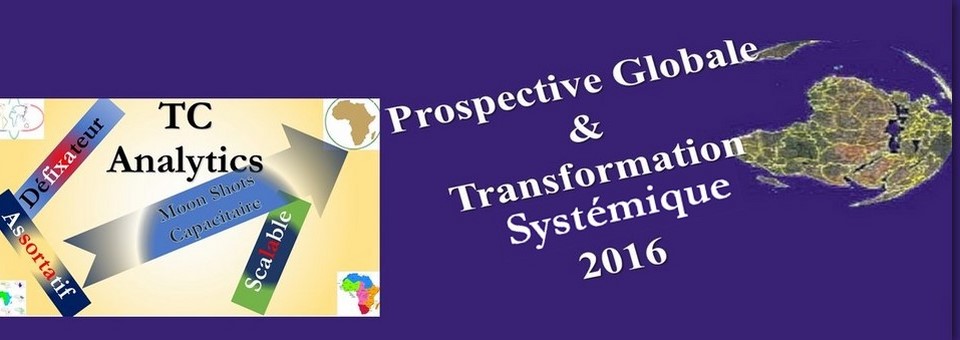Science Foresight: Lifting the Taboo!
PROSPECTIVE DE LA SCIENCE :LEVER LE TABOU !
Sams Dine SY* 19/04/2025
Sams Dine SY* 19/04/2025
SCIENCE FORESIGHT: LIFTING THE TABOO!Sams Dine SY* 19/04/2025
INTRODUCTION
There are a multitude of exercises, some of which have global pretensions. However, most of them are part of (technological) and (strategic) forecasting and are mainly part of an anticipatory approach reducing foresight to futurism. The use of a prescriptive methodology has a lot to do with it, even though it is just designed to exploit certain opportunities such as the spin-offs of fundamental research or leadership in disruptive innovation. Science could not be better reduced to an aggregate of norms and standards, or even intellectual property.
.
:KEY WORDS
Science, Foresight, Divin, Giga trends, Normative, Methodology, Magastan!
LIFTING THE TABOO: A DUTY, AN OBLIGATION
This is why the foresight of science remains a taboo subject, even a sacrilege. We might as well invent another universal religion, a living species or a habitable planet. This is the case when the scientifization of the divine shifts into the divinization of science. Fear of the future undoubtedly has a lot to do with it when "Hic Sunt Leones" (G. Berger: Phenomenology of Time and Prospective; Puf; 1964) makes it a science of war and unleashes this war against science. The distance from science makes more than one shudder. Why then go looking for what happened before the beginning of scientific and technical reflection in the Ionian school (~585) which claims to be at the origin of knowledge and wisdom if only to find coarseness or ignorance in it?
So many thinkers set out to prove that only the gods hold knowledge (sophia) as Socrates did a century later before ~ 369, then Aristophanes, Plato, Xenophon, Aristotle, Percival, Machiavelli Leonardo da Vinci, Shakespeare, Gongora, Kepler, Holbein, Newton, Einstein, Kierkegaard, Nietzsche, Lacan... Every initiate sets out like a mystic to conquer the Key to the World by refusing its diversity. No more than this monologous dialogue illustrates the heresy represented by the prospective exploration of science: "You were pursuing knowledge," says Phaedrus to Socrates. " The crudest ones desperately try to preserve even the corpses of the dead. Others build temples and tombs that they strive to make indestructible. The wisest and most inspired of men want to give their thoughts a harmony and a cadence that will protect them from alterations as well as from oblivion" (Eupalinos ou l'architecte (La Pléiade, vol II Gallimard, 1971). This is how P. Valery definitively buries the ambitions of any exploratory methodology at the risk of inspiring E. Morin with this irrevocable judgment: "we, inhabitants of the Western and Westernized world, suffer without being aware of it 2 types of cognitive deficiencies: 1) the blindness of a mode of knowledge which, compartmentalizing knowledge, disintegrates fundamental and global problems, which require transdisciplinary knowledge. 2) Western-centrism which perches us on the throne of rationality and gives us the illusion of possessing the universal (The Way. Pour l'avenir de l'humanité, Paris, Fayard, 2011).
More than a duty to put an end to one's relationship with the divine, lifting this taboo is an obligation, if only to avoid the divinatory pitfall and all those traps that have plunged the world into the tower of confusion for millennia. Above all, to warn when the "acheiropoiet" attitude of this winner-take-all triggers in real time and in general indifference a new scientific holdup while he embodies the most caricatural figure of the political entrepreneur, ignorant of normative methodology this tiny step towards science and its prospective exploration. We might as well encourage Gilgamesh to organize another, more selective Flood.
So many thinkers set out to prove that only the gods hold knowledge (sophia) as Socrates did a century later before ~ 369, then Aristophanes, Plato, Xenophon, Aristotle, Percival, Machiavelli Leonardo da Vinci, Shakespeare, Gongora, Kepler, Holbein, Newton, Einstein, Kierkegaard, Nietzsche, Lacan... Every initiate sets out like a mystic to conquer the Key to the World by refusing its diversity. No more than this monologous dialogue illustrates the heresy represented by the prospective exploration of science: "You were pursuing knowledge," says Phaedrus to Socrates. " The crudest ones desperately try to preserve even the corpses of the dead. Others build temples and tombs that they strive to make indestructible. The wisest and most inspired of men want to give their thoughts a harmony and a cadence that will protect them from alterations as well as from oblivion" (Eupalinos ou l'architecte (La Pléiade, vol II Gallimard, 1971). This is how P. Valery definitively buries the ambitions of any exploratory methodology at the risk of inspiring E. Morin with this irrevocable judgment: "we, inhabitants of the Western and Westernized world, suffer without being aware of it 2 types of cognitive deficiencies: 1) the blindness of a mode of knowledge which, compartmentalizing knowledge, disintegrates fundamental and global problems, which require transdisciplinary knowledge. 2) Western-centrism which perches us on the throne of rationality and gives us the illusion of possessing the universal (The Way. Pour l'avenir de l'humanité, Paris, Fayard, 2011).
More than a duty to put an end to one's relationship with the divine, lifting this taboo is an obligation, if only to avoid the divinatory pitfall and all those traps that have plunged the world into the tower of confusion for millennia. Above all, to warn when the "acheiropoiet" attitude of this winner-take-all triggers in real time and in general indifference a new scientific holdup while he embodies the most caricatural figure of the political entrepreneur, ignorant of normative methodology this tiny step towards science and its prospective exploration. We might as well encourage Gilgamesh to organize another, more selective Flood.
PITFALLS AND TRAPS TO AVOID
Any exercise in the foresight of science presupposes the use of a methodological paradigm that helps to discover scientific reality, through its form, its nature and its relationship with scientists. The methodology is said to be exploratory when it places science in the multi-spatial without excluding any space and the multi-temporal by going back to its origins before propelling itself to the horizon of at least a millennium.
The few exercises of global scope that claim to be part of it are content with a single level of analysis (challenges) with an emphasis on technological waves or revolutions. This is the case for all those carried out by international agencies such as the World Bank, FAO and UNIDO. The same goes for those that also address the question of science: Oecd, Unesco, Undp.
The Oecd's "Megatrends affecting science, technology and innovation, Oecd, 2016 exercise has an exploratory ambition without taking the trouble to make a distinction within these megatrends between those that are truly centuries-old (demographic, environmental, socio-economic) and those that are subject to radical uncertainties (globalisation, geopolitics, regionalisation, poverty, etc.). Worse, it includes conflictual uncertainties between actors (governments, interest groups, etc.) around a sovereignty issue and others, at most consensual (political, social, economic) around strategic challenges (growth pole, productivity, work, gender, health, well-being). Thus, the question of possible answers at each level is completely evacuated. For each megatrend, specification of the invariant and the breaking factors. For all the key questions, embark on a crafting of exploratory scenarios. For the rest (issue, challenge, urgent problems), identify the long-term vision, medium-term transformation options, and immediate actions in the face of emergencies.
The main, if not the only, gigatrend - the relationship to the divine - is ignored even though it is omnipresent in all spaces or continents, long before the appearance of the Mesopotamian religions (~3200). Classical cliometry is not really the appropriate instrument to appreciate its multi-millennial and multi-spatial dimension. Beyond these limits, the classic megatrends nevertheless send signals or are factors that disrupt science.
The Oecd's mandate does not allow it to lift such a taboo and none of the member countries will be involved in such an exercise. This is not the case with the Un, which since the 1970s has been trying to put scientific research and technological development on the international agenda (Unesco, United Nations University) as well as foresight and futurology through a wide variety of initiatives. From there to making the link between the two. A timid step was nevertheless taken when, as part of the preparatory work for the Un Summit on the 3rd Millennium, the "Millennium for Africa" project examined at lightning speed (15 days) how to "put science and its networks at the service of Africa" (S.D. Sy 2001). As its title indicates, it focuses on a single continent on the horizon of half a century without going back to the gigatrends, let alone propelling itself to the +3000 horizon. In the wake of this, a pro bono note assigns this mandate to Unesco also with a view to reducing the gap with the rest of the world of "Africa in the knowledge-based society; a prospective analysis concept paper" (S.D. Sy, 2002).
All eyes are on the only agency that has included science in its mandate, namely Unesco. Since its creation in 1960, it has displayed its threefold ambition: to define the "Role of science and technology in economic development" (EDPS n° 18, 1971), to bring together some of the discoveries of the 20th century in "Scientific Thought" (1978), to publish the "Report on Science in 2030" (2016), to display its claim not only to "Transform the future (anticipation in the twenty-first century; 2018) but to "Rethinking our futures together" (2021) even if it is limited to a new social contract for education. There is no better way to go around in circles around the subject. No doubt in anticipation of another "Ionian moment", before approaching it in the fund with the help of a prospective approach that is not limited to a literacy of Futures and Foresight. Especially when the world is moving towards a model of knowledge-based society. The series "Studies and Documents of Scientific Policy (EDPS)" thus makes UNESCO the precursor of normative studies on scientific research, which inspired more than one, and exercises on the deployment of scientific activity, including one devoted to intertropical Africa in 1967 (n° 11) after having carried out exercises for seven countries, including the USA.
UNESCO's potential to lift this taboo is not only limited by the rather evaluative or even prescriptive approach adopted in its exercises. It is seriously hampered by the chaotic relations maintained with this custodian of science, which on two occasions breaks off its relations with the organization (1984-2003 and 2017-2023). The next withdrawal, probably in 2025, will be used as an excuse to do nothing, even if it means citing financial reasons. It is hard to see the American government making available to United Nations agencies, let alone Unesco, the equivalent of an exoplanet telescope such as NASA's James Webb to explore the entire earth in depth, and that of a "Pythian Oracle" such as the Mit System Model to scrutinize it on the horizon of at least a century. He did not even do so for the various "Global Trends" exercises, if only to encourage the National Intelligence Council (Nic) to inscribe its science of the future or futurology in the "external distance".
Metascience - a recent initiative in the Us - nevertheless opens up a path when it aims to redefine the methodology for solving the problems of science in the making, without excluding exploring the future. At this stage, Metascience is not interested in scientific gigatrends since ancient times, even if only to identify major breakthroughs. Wild cards likely to interfere with the radical uncertainties surrounding fundamental and conflictual science make transfer sciences a major issue for all its actors engaged either in the scientifization of politics or in the politicization of science to the point of calling into question the traditional attributes of state sovereignty.
Nevertheless, the signals emitted from the Federal State invite us to closely scrutinize its relations with science when it revolves around it, through its divinization and politicization.
ruter de près ses rapports avec la science quand il tourne autour, par sa divinisation et sa politisation.
ALERT
If there is a country that has a singular relationship with the divine, it is the Us, the ideal laboratory for any prospective exploration of science. A country that owes its birth to a series of scientific holdups to the point of setting itself up as Hegemon, displaying an acheiropoiet-type attitude. The divinization of science operates in technological waves and clusters of disruptive innovations to the point of "fomenting reproductive revolutions" in all fields under the guise of Darpa.
The Great Depression (1929) contributed to this when the redeemer cause spurred on by the Jim Crow Act adopted in 1877 and abolished in 1964, authorized segregation and legalized all forms of authoritarianism in the twentieth century: nazism, fascism and apartheid in particular. Instead of provoking another selective deluge, the divinization of science shifts into its politicization like a cumulative chain with a profound depressive effect: stock market crash, unemployment, bankruptcy, passivity, gold hoarding, deflation, protectionism. The first New Deal (1933-1943) nevertheless enshrined the desire to "speak truth to power" through the scientifization of policy. As a result, the federal government created the National Resources Planning Board, NRPB (1933), triggering opposition from Congress and the Supreme Court, which obtained its closure a decade later. It is in this difficult context that transdisciplinary knowledge or Policy Analysis Science was born, the scene of countless "paradigm wars" around its deep core (Positive Analysis) and its protective crown (Normative Analysis) and whose methodology it succeeded in operationalizing in less than a century.
The 2nd World War and the Cold War did the rest when the Manhattan Project (1943-45) turned the science of war into war and then the brain drain and their "kidnapping" to make nuclear bombs and fuel the arms race, including in interstellar space. It structures the global scientific agenda around a model of innovation system nourished by network externalities that drives a knowledge-based society for the benefit of three poles: academia, government, and military. A "Triple Helix" approach that challenges when it assimilates each of these actors to one of the three paradigms - in order, methodology, epistemology, ontology - makes science an issue, a national resource emitting a multitude of signals and noises announcing radical, relative, creative, destructive wild cards as the case may be. In addition, the traditional distinction between pure sciences and useful or capital knowledge is replaced by another between scientific knowledge or fundamental science, knowledge or applied sciences (transfer, policy analysis, cognitive, etc.), information or artificial sciences, data or computer sciences (digital, Big Data, AI, etc.). crypto-quantum...).
The most evocative signal comes from its relationship with scientific methodology, the so-called "normative" approach, in particular which draws on "naïve realism" before the positivist drift acts its decline in favor of the exploratory methodology of the evaluative or prospective type, as the case may be.
The operationalization of the normative methodology took an exceptional turn with the creation of the United States Government Accountability Office (Gao), a true first-mover in 1921. The Federal State anticipated the long wave of growth (1945-1970) by investing massively in quantitative and qualitative research. The science of transfer, including the engineering of complex systems, enables feats through Sage, Atlas, Rand, Delphi and facilitates interactions within the military-industrial-academic complex, the driving force behind the triple helix.
A decisive step was taken when Gao succeeded in 1972 in operationalizing the normative methodology through the Yellow Book published in 1980, then in the form of Government Audit Standards (GAS) in 1988 qualified according to their objectives: financial audits or performance audits, and finally by distinguishing between audits of economy and efficiency and program audits. Having become Generally Accepted (Gagas), they were replicated in all the Courts of Auditors of the world, starting in 1953 with the creation of the "International Organization of Supreme Audit Institutions (INTOSAI"). A mechanical replica, without any theoretical or conceptual input, either by the United Nations through JIU (Norms of Governance Joint Inspection Unit; 1976; Norms and Standards for Inspection 2013; The Norms and Standards for Evaluation 2012, General Principles and Guidelines for Investigations 2013) and CEPA (Committee of Experts on Public Administration Strategy guidance note on Multi-Level Governance 2024). The same has been true in Europe, since the creation of his own in 1977 and then the Oecd (Quality Standards for Development Evaluation, 2010). This period was also that of cognitive capitalism, punctuated by sustained efforts to consecrate the figure of the political entrepreneur, to divert scientific research to the benefit of his political ideologies.
The status of the protective crown is challenged as a favorite terrain of the greatest controversies - equality vs. equity, evaluative vs. prescriptive, commutative vs. redistributive approach - accentuating the hold of Interest Groups with a Private Agenda (Giap) and norms on the positivist current. Their activism within the Triple Helix triggers collusion and capture. Much more than a simple dualism as formulated by Stuart W. Leslie in "The Cold War and American Science: The Military-Industrial-Academic Complex at MIT and Stanford. Columbia University Press, 1993." Their power is growing stronger as shocks and crises multiply before reaching the peak following the attacks of 9/11 and the invasion of Iraq. The exorbitant blow of this war and the consequences on the relationship with allies and partners put the action of the state to the test to the point of affecting the validity and reliability of the normative approach. The latter is now at a crossroads: to remain this oxymoron that has cushioned the damage caused by the positivist drift since the 80s, whose "Tina Reagan" consecrates the scientifization of policy following the "argumentative turn", even if it means changing the toolbox; or to fall into the "Science Bush" universe, the chameleon concept at the origin of so many disasters: the financial bubble (2000), the attacks of 9/11 (2001), the war in Iraq (2023), the subprime crisis (2006) and the Great Recession (2008).
Several signals place him at this stage in this universe. The Federal State gradually becomes an stake as soon as the attributes of its sovereignty are caught in a vice despite two warnings. The first (Gao, 2022: GAO-22-3SP Trends Affecting Government and Society) points to the fate of two attributes - fiscal and monetary - if the debt exceeds Gdp by 200% in 2048, resulting in the loss of all lending and market power. The second (Us Department of Defense: 2022 National Defense Strategy) available in 2024 in turn points to the loss of the military attribute now when "the chances of the United States participating in a major war are the highest in 80 years, and its military is not prepared to deal with it". Both reports agree on a harsh diagnosis: "not (enough for the former) prepared" in the face of the risk of tipping from the status of major player or Hegemon to that of stake or prey to the benefit of clever (tentioned) partners and enemies. Their over-media coverage triggered two clamors - Hitler Come back! Jim Crow Come back! - which have polluted the world atmosphere ever since, to the point of propelling to the forefront figures of political entrepreneurs who openly claim to embody all forms, including the most caricatured. The decisions taken since then simply aim to reconfigure the Federal State following the abandonment of the normative methodology in favor of a reductive model of analysis based on a single mode (Department), level (Government) and criterion (Efficiency).
The paradigm shift does not even take into account the progress in research that GAO has made thanks to the multi-mode model (department, agency, program, etc.), multi-level (from local to federal, from national to global) and multi-criteria (coherence, achievement of objectives, effectiveness, efficiency, relevance, impact). Nevertheless, this is enough to structure the global agenda while provoking a whirlwind of criticism, including that of the scientific community most involved in normative methodology (Hks, Mit, etc.). However, there is no warning about the real nature of this change when the measures taken serve as a counter-fire to erase any trace likely to support the hypothesis put forward by J. Stiglitz on the Three Trillion Dollar War (Nber), increasingly robust on the occasion of a No-Fly-Zone over Iraq in 2003 and confirmed in 2008 on the real cost of this war. The downgrading of the rating of the U.S. Military-Industrial-Academic-Monetary Complex (Miam) is forcing ubiquitous interest groups and networks to look for scapegoats and drown out the evidence. The most visible of them in turn embark on a heist to recover at least $2 trillion" of the $6.75 trillion federal budget, even if it means recruiting volunteers or "cannon fodder" for $5000. This is how a "scientific police", decrees in complete ignorance, the abandonment of normative methodology in favor of a so-called "normative science", plunges into a "Triple Trap" dragging an entire country into the "Fatal Error". It is now stripped of all its attributes of sovereignty in favor of the most visible billionaires and billboards 2.0.
As the Defense Secret has been lifted, all actors concerned are asked to join this other clamor:
The Great Depression (1929) contributed to this when the redeemer cause spurred on by the Jim Crow Act adopted in 1877 and abolished in 1964, authorized segregation and legalized all forms of authoritarianism in the twentieth century: nazism, fascism and apartheid in particular. Instead of provoking another selective deluge, the divinization of science shifts into its politicization like a cumulative chain with a profound depressive effect: stock market crash, unemployment, bankruptcy, passivity, gold hoarding, deflation, protectionism. The first New Deal (1933-1943) nevertheless enshrined the desire to "speak truth to power" through the scientifization of policy. As a result, the federal government created the National Resources Planning Board, NRPB (1933), triggering opposition from Congress and the Supreme Court, which obtained its closure a decade later. It is in this difficult context that transdisciplinary knowledge or Policy Analysis Science was born, the scene of countless "paradigm wars" around its deep core (Positive Analysis) and its protective crown (Normative Analysis) and whose methodology it succeeded in operationalizing in less than a century.
The 2nd World War and the Cold War did the rest when the Manhattan Project (1943-45) turned the science of war into war and then the brain drain and their "kidnapping" to make nuclear bombs and fuel the arms race, including in interstellar space. It structures the global scientific agenda around a model of innovation system nourished by network externalities that drives a knowledge-based society for the benefit of three poles: academia, government, and military. A "Triple Helix" approach that challenges when it assimilates each of these actors to one of the three paradigms - in order, methodology, epistemology, ontology - makes science an issue, a national resource emitting a multitude of signals and noises announcing radical, relative, creative, destructive wild cards as the case may be. In addition, the traditional distinction between pure sciences and useful or capital knowledge is replaced by another between scientific knowledge or fundamental science, knowledge or applied sciences (transfer, policy analysis, cognitive, etc.), information or artificial sciences, data or computer sciences (digital, Big Data, AI, etc.). crypto-quantum...).
The most evocative signal comes from its relationship with scientific methodology, the so-called "normative" approach, in particular which draws on "naïve realism" before the positivist drift acts its decline in favor of the exploratory methodology of the evaluative or prospective type, as the case may be.
The operationalization of the normative methodology took an exceptional turn with the creation of the United States Government Accountability Office (Gao), a true first-mover in 1921. The Federal State anticipated the long wave of growth (1945-1970) by investing massively in quantitative and qualitative research. The science of transfer, including the engineering of complex systems, enables feats through Sage, Atlas, Rand, Delphi and facilitates interactions within the military-industrial-academic complex, the driving force behind the triple helix.
A decisive step was taken when Gao succeeded in 1972 in operationalizing the normative methodology through the Yellow Book published in 1980, then in the form of Government Audit Standards (GAS) in 1988 qualified according to their objectives: financial audits or performance audits, and finally by distinguishing between audits of economy and efficiency and program audits. Having become Generally Accepted (Gagas), they were replicated in all the Courts of Auditors of the world, starting in 1953 with the creation of the "International Organization of Supreme Audit Institutions (INTOSAI"). A mechanical replica, without any theoretical or conceptual input, either by the United Nations through JIU (Norms of Governance Joint Inspection Unit; 1976; Norms and Standards for Inspection 2013; The Norms and Standards for Evaluation 2012, General Principles and Guidelines for Investigations 2013) and CEPA (Committee of Experts on Public Administration Strategy guidance note on Multi-Level Governance 2024). The same has been true in Europe, since the creation of his own in 1977 and then the Oecd (Quality Standards for Development Evaluation, 2010). This period was also that of cognitive capitalism, punctuated by sustained efforts to consecrate the figure of the political entrepreneur, to divert scientific research to the benefit of his political ideologies.
The status of the protective crown is challenged as a favorite terrain of the greatest controversies - equality vs. equity, evaluative vs. prescriptive, commutative vs. redistributive approach - accentuating the hold of Interest Groups with a Private Agenda (Giap) and norms on the positivist current. Their activism within the Triple Helix triggers collusion and capture. Much more than a simple dualism as formulated by Stuart W. Leslie in "The Cold War and American Science: The Military-Industrial-Academic Complex at MIT and Stanford. Columbia University Press, 1993." Their power is growing stronger as shocks and crises multiply before reaching the peak following the attacks of 9/11 and the invasion of Iraq. The exorbitant blow of this war and the consequences on the relationship with allies and partners put the action of the state to the test to the point of affecting the validity and reliability of the normative approach. The latter is now at a crossroads: to remain this oxymoron that has cushioned the damage caused by the positivist drift since the 80s, whose "Tina Reagan" consecrates the scientifization of policy following the "argumentative turn", even if it means changing the toolbox; or to fall into the "Science Bush" universe, the chameleon concept at the origin of so many disasters: the financial bubble (2000), the attacks of 9/11 (2001), the war in Iraq (2023), the subprime crisis (2006) and the Great Recession (2008).
Several signals place him at this stage in this universe. The Federal State gradually becomes an stake as soon as the attributes of its sovereignty are caught in a vice despite two warnings. The first (Gao, 2022: GAO-22-3SP Trends Affecting Government and Society) points to the fate of two attributes - fiscal and monetary - if the debt exceeds Gdp by 200% in 2048, resulting in the loss of all lending and market power. The second (Us Department of Defense: 2022 National Defense Strategy) available in 2024 in turn points to the loss of the military attribute now when "the chances of the United States participating in a major war are the highest in 80 years, and its military is not prepared to deal with it". Both reports agree on a harsh diagnosis: "not (enough for the former) prepared" in the face of the risk of tipping from the status of major player or Hegemon to that of stake or prey to the benefit of clever (tentioned) partners and enemies. Their over-media coverage triggered two clamors - Hitler Come back! Jim Crow Come back! - which have polluted the world atmosphere ever since, to the point of propelling to the forefront figures of political entrepreneurs who openly claim to embody all forms, including the most caricatured. The decisions taken since then simply aim to reconfigure the Federal State following the abandonment of the normative methodology in favor of a reductive model of analysis based on a single mode (Department), level (Government) and criterion (Efficiency).
The paradigm shift does not even take into account the progress in research that GAO has made thanks to the multi-mode model (department, agency, program, etc.), multi-level (from local to federal, from national to global) and multi-criteria (coherence, achievement of objectives, effectiveness, efficiency, relevance, impact). Nevertheless, this is enough to structure the global agenda while provoking a whirlwind of criticism, including that of the scientific community most involved in normative methodology (Hks, Mit, etc.). However, there is no warning about the real nature of this change when the measures taken serve as a counter-fire to erase any trace likely to support the hypothesis put forward by J. Stiglitz on the Three Trillion Dollar War (Nber), increasingly robust on the occasion of a No-Fly-Zone over Iraq in 2003 and confirmed in 2008 on the real cost of this war. The downgrading of the rating of the U.S. Military-Industrial-Academic-Monetary Complex (Miam) is forcing ubiquitous interest groups and networks to look for scapegoats and drown out the evidence. The most visible of them in turn embark on a heist to recover at least $2 trillion" of the $6.75 trillion federal budget, even if it means recruiting volunteers or "cannon fodder" for $5000. This is how a "scientific police", decrees in complete ignorance, the abandonment of normative methodology in favor of a so-called "normative science", plunges into a "Triple Trap" dragging an entire country into the "Fatal Error". It is now stripped of all its attributes of sovereignty in favor of the most visible billionaires and billboards 2.0.
As the Defense Secret has been lifted, all actors concerned are asked to join this other clamor:
Heil Science MAGASTNA !
(Make America Great Against Nazism & Apartheid !)
*Sams Dine SY, 05/19/2025
Facilitator of the Open Science platform https://samsdinesy.org/
dedicated to Distance Science and its reproducible impacts: Volitional Dynamics, Exploratory Foresight, Policy Analysis, Systemic Transformation
Facilitator of the Open Science platform https://samsdinesy.org/
dedicated to Distance Science and its reproducible impacts: Volitional Dynamics, Exploratory Foresight, Policy Analysis, Systemic Transformation
